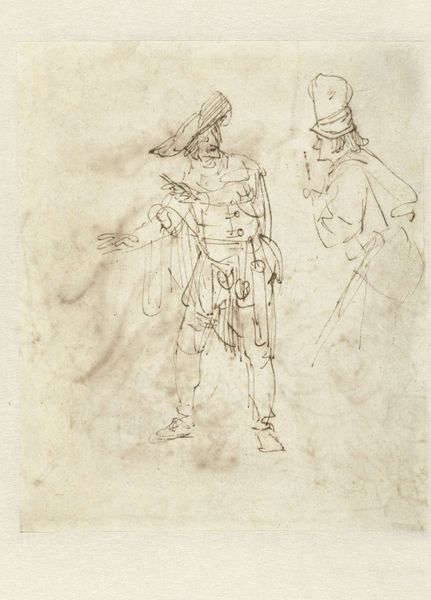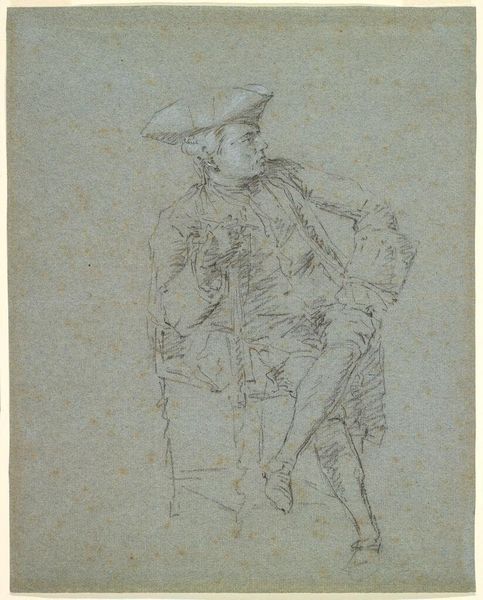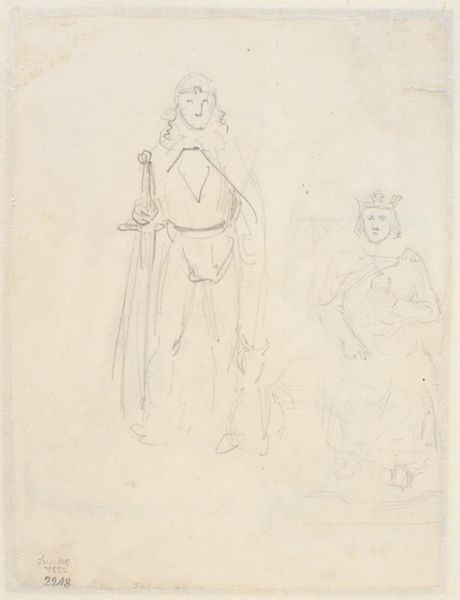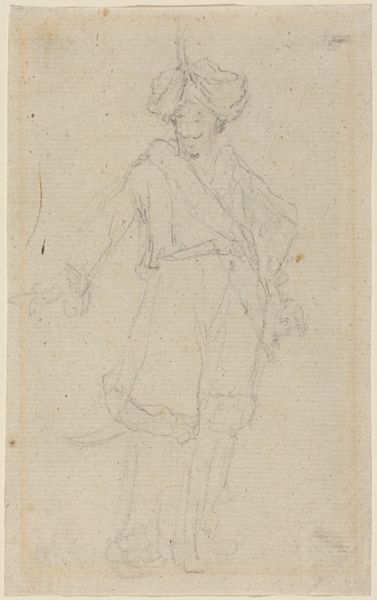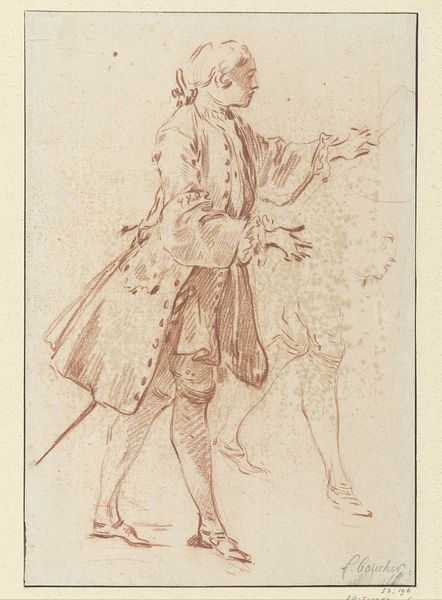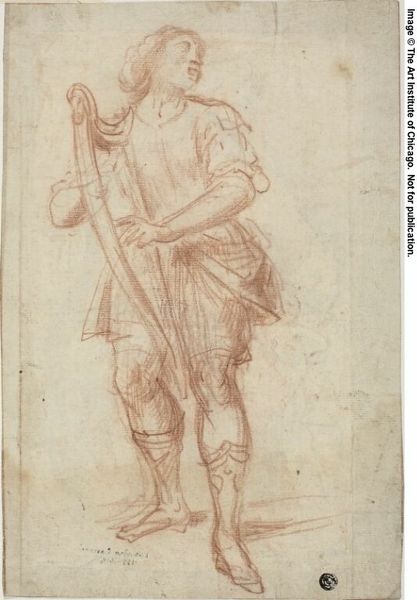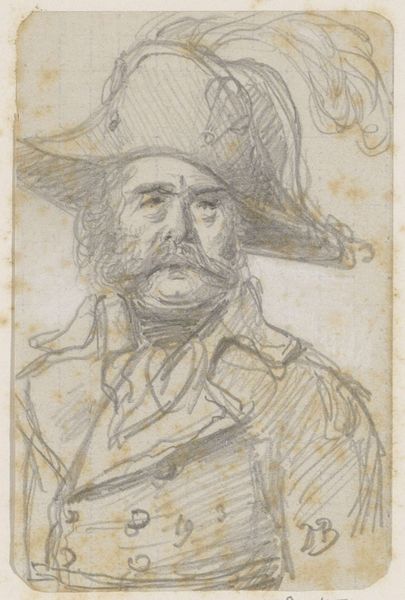
Napoleon Bonaparte at the Champ de Mai, June 1, 1815 1810 - 1820
0:00
0:00
drawing, print, pencil
#
portrait
#
drawing
# print
#
romanticism
#
pencil
#
history-painting
Dimensions: 11 15/16 x 8 11/16 in. (30.3 x 22.1 cm)
Copyright: Public Domain
Curator: Here we have Jean Démosthène Dugourc’s pencil and print drawing, "Napoleon Bonaparte at the Champ de Mai, June 1, 1815," created sometime between 1810 and 1820. Editor: What strikes me immediately is its ghostliness—literally! The ethereal sketches and preliminary outlines give it an unfinished, fleeting quality, like trying to capture a legend before it vanishes. Curator: The visible layering and the strategic placement of Napoleon's figure—in triplicate no less—reveal a methodical approach. We can see the artist working through different poses and compositions before settling on a final portrayal. Editor: It’s as though Dugourc is conjuring him. One moment just a head, then boom, the full regalia. It’s like watching the myth of Napoleon taking shape, bit by bit. I can almost smell the pencil dust. Curator: Precisely. The medium, especially pencil on paper, underscores the transient nature of power. Also, note the meticulous rendering of his attire—each frill and ornament carefully considered. Editor: All that detail on his uniform seems almost frantic against the overall softness. Maybe Dugourc was overwhelmed by the pomp or trying too hard to capture its essence. Did he admire him? Curator: Well, Napoleon's political maneuvers were quite tumultuous, with varying levels of popular and critical support across France. It is easy to believe there were complicated opinions about his reign. Editor: I see your point. All those unfinished lines create an effect almost of an evaporation. Like Napoleon’s grip on power was always slipping. I am sure people questioned his right to rule after his return from Elba, his days felt numbered. Curator: The visual strategy seems aimed to reveal the complex layering of historical narrative itself. The image is an early nineteenth century rendering, but we are looking at a sketch in the Met today. Editor: Yeah, it has an unusual timeless feel, I imagine viewers generations later will find its quiet mystery and stark contrasts moving and profound. Curator: Agreed. This is a testament to the artist’s understanding of visual and political semiotics.
Comments
No comments
Be the first to comment and join the conversation on the ultimate creative platform.
